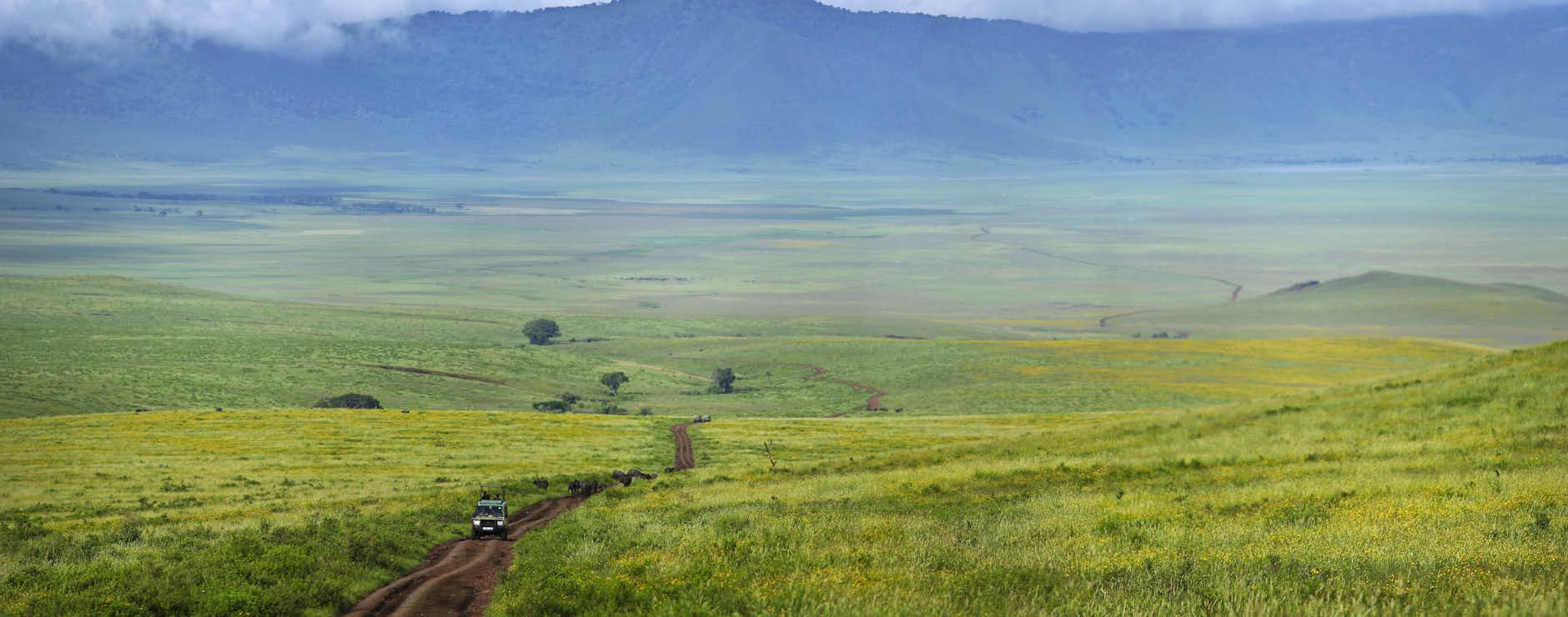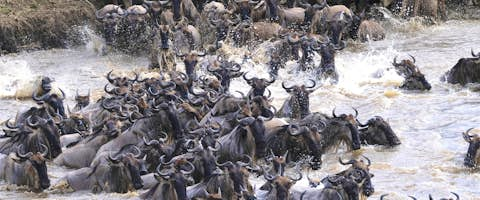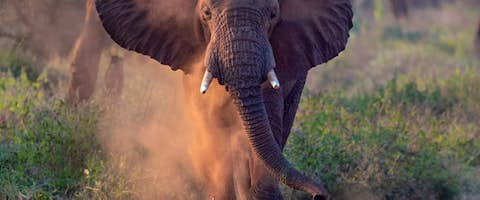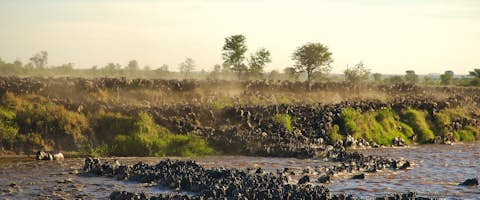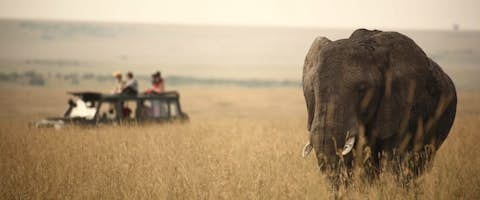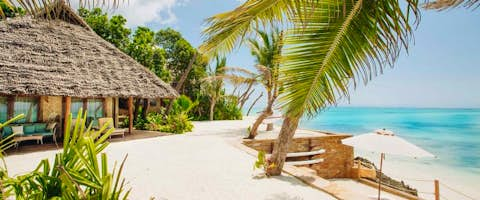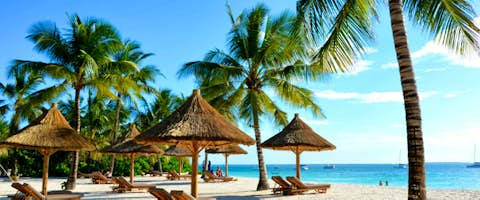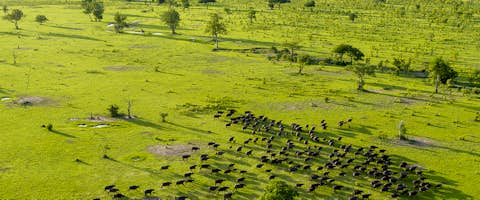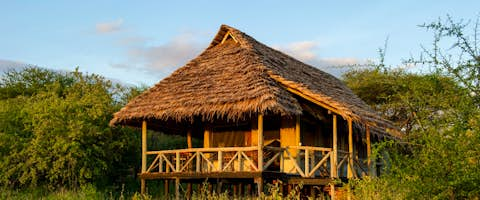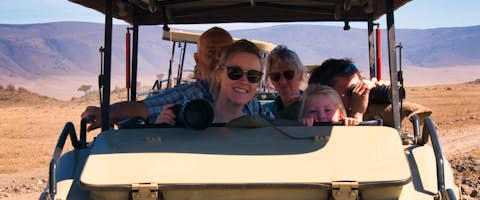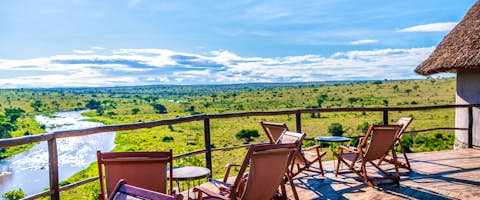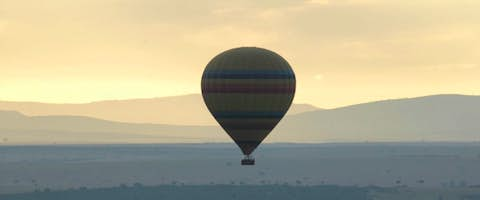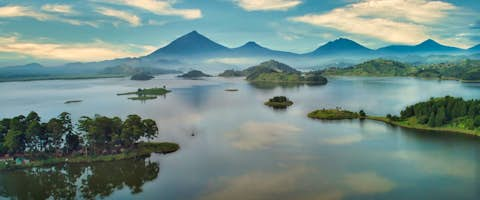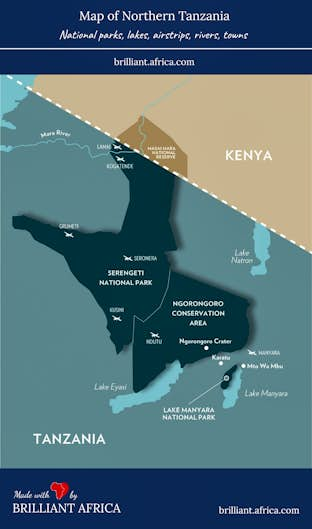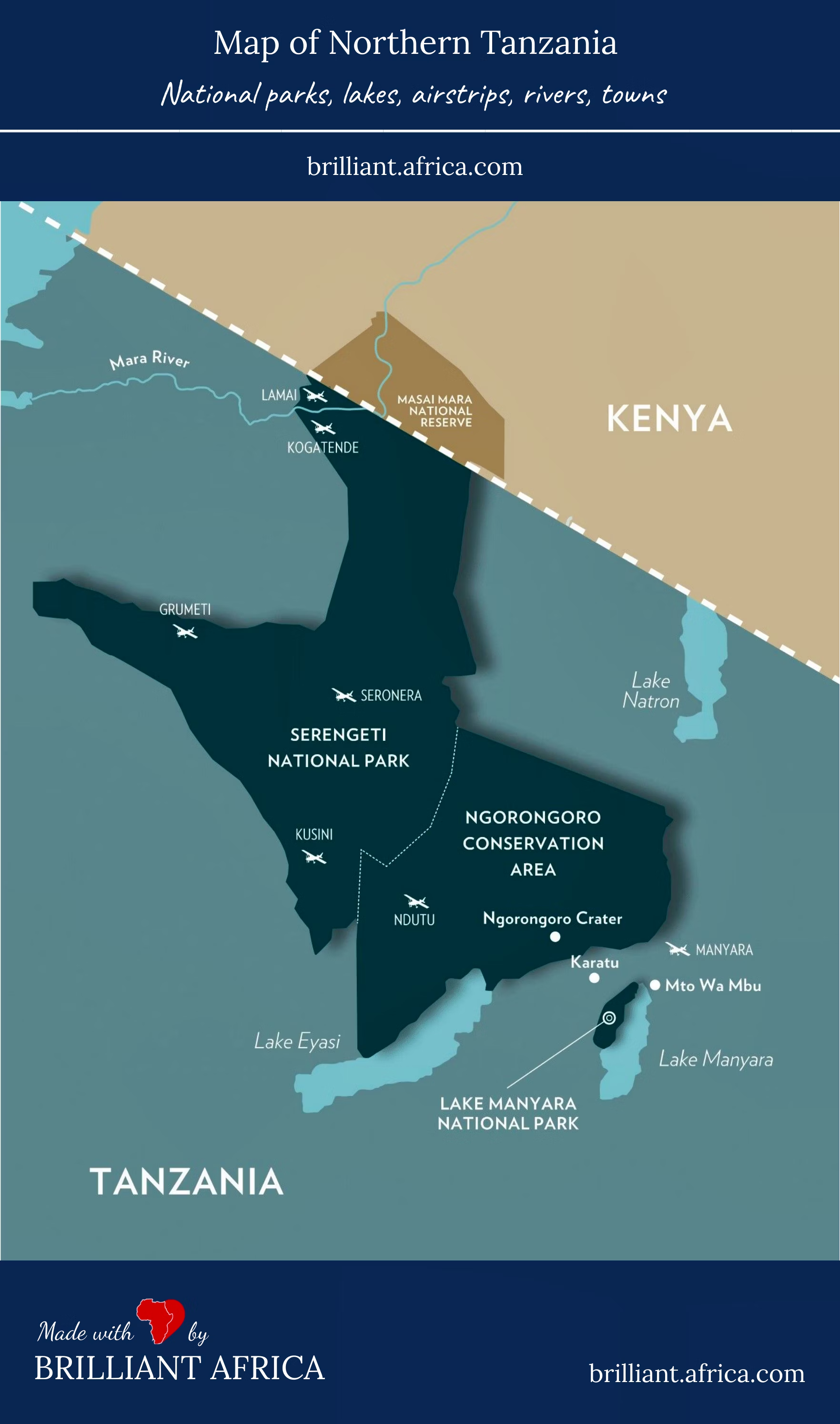The Ngorongoro Crater, at a glance
The Ngorongoro National Park is located west of Arusha, connecting to the Serengeti in the north-west and to the Great Rift Valley in the east.
The park was established as a conservation area for wildlife and the semi-nomadic Maasai population that reside in it.
The caldera is an important landmark for human history, as well as an essential habitat safeguarding animal diversity. Despite its small area, the caldera has excellent bio-diversity, and several globally threatened species live on these plains. These plains form part of the route of the Great Migration.
The caldera is of scientific importance as important discoveries were made here that shed light on the path of human evolution.
Aside from the main caldera, there are two other volcanic craters: the Olmoti and Empakai. The Olmoti is famed for its beautiful waterfalls, and the Empakai is known for its deep lake and lush green walls.
Another amazing site is the Olduvai Gorge, a 14km long ravine. In order to protect this incredible natural wonder, visitor numbers are closely monitored, and you must obtain a permit to enter the crater and the gorge.
The crater was formed around 2.5 million years ago when a volcano - thought to be roughly the same height as Kilimanjaro - erupted and collapsed in on itself. Now dormant, the volcano’s crater is 610 metres deep and 20km wide, making it the world’s largest inactive caldera.
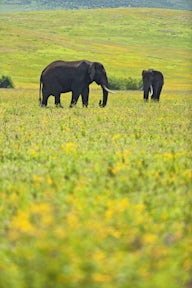
Visit the Ngorongoro Crater on these trips
The tours below showcase just some of what is possible. Use these itineraries as starting points, or to draw inspiration. Then get in touch, and let our expert team help craft the perfect itinerary for you.
Reasons to visit the Ngorongoro Conservation Area
- The Ngorongoro Conservation Area (NCA) is one of Tanzania's most popular safari destinations. This 829,200 hectare UNESCO World Heritage Site forms part of the wider Serengeti ecosystem. The region takes its name from the Ngorongoro Crater. Formed 2-3 millions years ago, it is one of the world's oldest inactive volcanic calderas.
- What once was a fiery, lava strewn, inhospitable area is now home to 25,000 large animals, including lion, black rhino, elephant, and giraffes.
- The Ngorongoro Crater is one of the best places for hiking in Tanzania, with one of the most popular routes taking you up the Olmoti volcano and down towards the Empakaai Crater Lake. Here, thousands of flamingos flock in the shallows, and the views from the trail are almost unimaginable.
- The site is of significant archaeological and palaeontological significance, and you can visit these sites at Oldupai Gorge and at Alaitole in the Ngarusi area.
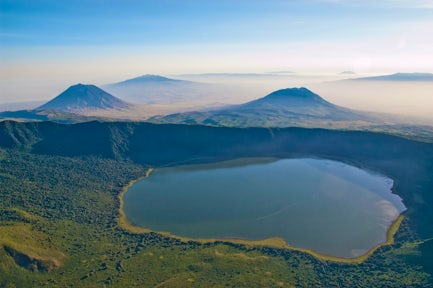

Brilliant says
If you were given the chance to see elephants, buffalo, leopard, lion, and rhino inside the forest-laced caldera of a 3 million-year-old volcano - would you take it?
Safaris in the Ngorongoro Crater
Access to the crater for safaris is limited to between 7am and 4pm. For photographers, consider getting down to the crater at sunrise, beating the crowds, so no other vehicles obstruct your shots.
Safaris in Ngorongoro are game drives. The small area of the park combined with its popularity means that it can get busy during peak season.
The Southern Highlands, unlike the rest of the crater, are less frequented by travellers. This is in part because there is less wildlife in the area as the Maasai lead their cattle through here. If you've got a bit of extra time, it's worth passing through here to meet some of the local Maasai people.
You can also take a walking safari with an experienced ranger up to the rim of the Western Great Rift Valley. There are few predators in this region, so it allows you to see animals like ungulates and antelope up close.
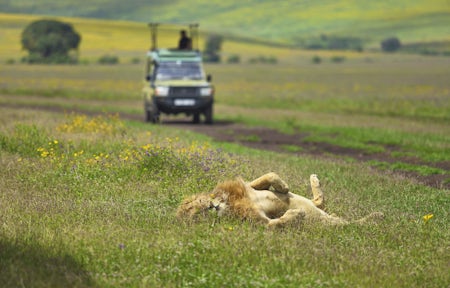
The Crater Descent
The crown jewel of the Ngorongoro Conservation Area is the Ngorongoro Crater. This ancient, forest-laced caldera is home to over 25,000 large mammals, and it has some of the largest wildlife densities in the world.
If you were given the chance to discover elephants, buffalo, leopard, lion, and rhino inside the caldera of a 3 million year old volcano - would you take it?
After a 40-minute drive, you'll arrive at the Ngorongoro Crater rim. It's an early start, you want to get to the crater early for the best wildlife and photography opportunities. En route, you'll spot zebra and other plains game.
Soon, the grasslands turn to mountain forest as you being the descent from the crater rim. Once you reach the bottom, you spend the day on a game drive around the 300km crater floor. You have the opportunity see the Big 5 and many roaming predators.

Wildlife at Ngorongoro
Variations in climate, landforms, and altitude produce a range of habitats that can support a variety of wildlife, and has led to a network of overlapping ecosystems.
The crater basin is covered with fresh water and alkaline lakes, marshes and swamps. These alkaline lakes attract flamingos, which number in their thousands during the wet season.
The crater is home to some 30,000 animals, some of which migrate here during the Great Migration, and others that stay here year-round.
The rich, volcanic, fertile soil of the crater hosts plenty of wildlife in the dry season, including warthog, impala, and buffalo. These prey in turn attract predators, including lions, hyena, cheetah, leopard, wild hunting dog and golden cat. Honey badgers, jackals, foxes, and ostrich can be found here year-round. A high population of cheetahs and lions can be found in the Lake Ndutu region west of the crater.
The crater is also home to over 500 species of bird, including the Rüppell’s Griffon vulture.
The rarest animals found here are the black male lion and the black rhino. Interestingly, there are no giraffes in the crater; it is thought that they cannot get up the steep sides.
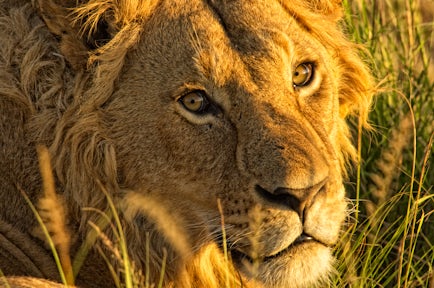
Hiking in the Ngorongoro Crater
The Ngorongoro Crater offers at least one day’s worth of safari, but those staying for more than a day or two can enjoy some hikes up the wall of the crater.
There are plenty of trekking opportunities up the rim of the crater, where you can enjoy panoramic views of the entire crater region, as far as the OI Doinyo Lengai volcano. On a clear day, you can even see Kilimanjaro and Lake Natron.
In the southern highlands of the crater you can hike Mount Lemagurut, which reaches 3,147 metres. The climb is difficult, so you will need a decent level of fitness. The climb will take all day and start just after breakfast. At the summit, you're rewarded with spectacular views of the Serengeti plains, the Ngorongoro Crater, and Lake Eyasi.
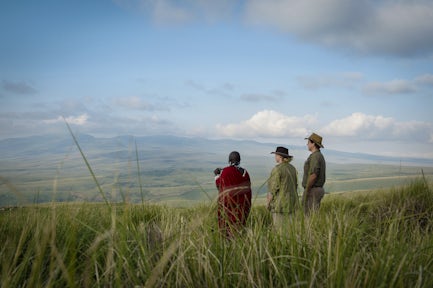
The Olmoti Climb
Following the ancient Maasai cattle trail up the Olmoti crater, passing through thick mountain forests, grasslands, and rocky outcrops.
The trek usually starts and ends at The Highlands camp, and involves 2-3 hours hiking.
The views along the trail are fantastic, and you'll pass by a diversity of flora and ample butterfly species. Once you reach the summit, you're rewarded by sweeping views over the Olmoti Crater.
The hike follows a route that is home to buffalo, leopard, hyena, zebra, bushbuck and even the occasional elephant!
If you arrive at camp before 3pm, you can do the hike on the day of arrival. It can also be done after a visit to the Ngorongoro Crater on a full day.
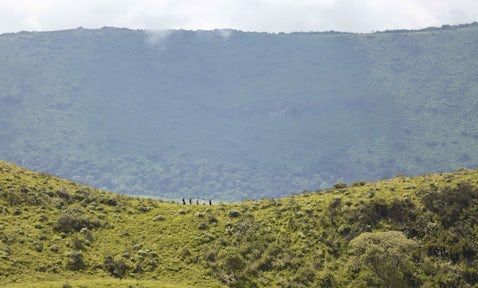
The Empakaai Descent
Too often overshadowed by her bigger sister, the Ngorongoro Crater, the stunning Empakaai Crater lies 40km north-east.
Depending on the location of your lodge, you can drive for around an hour through the Bulbul Depression, passing by a multitude of wildlife, before arriving at Empakaai.
From here, you've got incredible views of the Empakaai Crater and Oldoinyo Lengai (Tanzania's most active volcano).
Accompanied by an NCA ranger, you'll begin the 30-45 minute descent into the crater through thick, verdant forests towards the crater floor.
The lake at the base of the crater is full of bird life, including the famous flamingos. From here, it's a 1-hour 30-minute hike back to the vehicle, with great wildlife viewing en route (buffalo, hyena, and elephant).
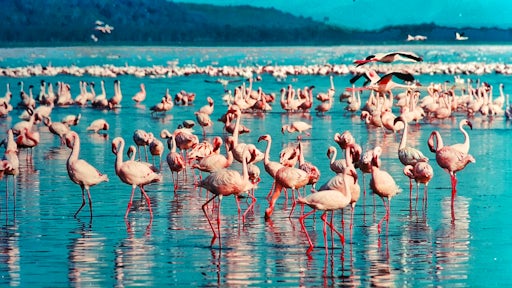
When to visit the Ngorongoro Crater
The best time to visit the Ngorongoro Conservation area is from June to February if you are coming for the Great Migration. Wildlife lives at the crater year-round, which means you can visit at any time of year and still get great game viewing.
March and April see the worst of the rains, so the crater is less busy during these months. One benefit of visiting during the wet season is that the landscapes are beautiful, but wildlife viewing is not as good. The peak season is July to September, and this corresponds with the best wildlife viewing.
If you are keener on seeing the predators in action, go in January or February when there is a hiatus in the annual rains and the wildebeest calve.
Due to a large number of vehicles during the high season, some prefer to travel to the crater in the low season. This is still a pleasant experience because the water levels in Lake Magadi (in the centre of the crater) results in higher concentrations of flamingos. Plus, most of the predators stay in the basin year round – there are still plenty of animals for them to hunt. The only thing you will miss is the Great Migration, and of course you should be prepared for some rains if travelling in the quieter months!

When is the best time to visit the Ngorongoro Conservation Area?
-
January
The short rains of October to December have passed, which means you can enjoy the lush, verdant landscapes without the wet weather.
Daytime temperatures are pleasant, and conditions for game drives and birding are excellent. Sometimes, the longer grasses can lead to decreased visibility of the wildlife in the plains, but this is usually not a problem - there's just so much here!
Average max temperature: 25°C.
Average min temperature: 13°C
Average rainfall: 87mm
-
February
A busy month, conditions in February are fantastic for game viewing. If you want to avoid the crowds, you should consider an afternoon game drive rather than the more popular morning visit.
Average max temperature: 25°C.
Average min temperature: 13°C
Average rainfall: 104mm
-
March
March is the beginning of the long rainy season in Tanzania, and so you should expect intermittent rains most days. March is also the calving season for many animals, and this can attract predators making for some exciting game viewing!
March is less busy than January or February, so great if you want a more secluded safari experience.
Average max temperature: 25°C.
Average min temperature: 13°C
Average rainfall: 137mm
-
April
The rains continue and the temperature begins to drop, but the scenery is unbeatable in April. The crater floor is carpeted with blooming wildflowers making for incredible photographs.
April is the least busy month of the year, meaning cheaper prices and a more secluded experience.
Average max temperature: 23°C.
Average min temperature: 15°C
Average rainfall: 140mm
-
May
May is very similar to April: the long rains continue, flowers continue to bloom, and there are fewer safari vehicles jostling for the best positions.
Average max temperature: 21°C.
Average min temperature: 14°C
Average rainfall: 60mm
-
June
The long rains come to an end, and the dry season begins. Days are cloudless and sunny.
The scenery is still beautiful following the rains, and grasses long. Game viewing is still great and conditions perfect for photography. From June, visitor numbers begin to increase again.
Average max temperature: 21°C.
Average min temperature: 12°C
Average rainfall: 12mm
-
July
Days are pleasant, sunny, and generally cloud-free. The vegetation is less dense following the break in the rains, making July one of the best months to visit for game viewing. Visitor numbers are high in July.
Average max temperature: 21°C.
Average min temperature: 11°C
Average rainfall: 13mm
-
August
As water holes start to dry up, the wildlife congregates around the few permanent water holes. This makes game viewing exceptional in August, and the days are sunny and warm.
Average max temperature: 21°C.
Average min temperature: 11°C
Average rainfall: 23mm
-
September
In September, temperatures are generally higher, but early mornings and evenings still get cold. September is one of the best months of the year for game viewing; grasses are short and water sources less abundant. Of course, with the great conditions comes more vehicles!
Average max temperature: 24°C.
Average min temperature: 12°C
Average rainfall: 7mm
-
October
October is a transition from the dry season to the start of the short rains that run until December. The first half of the month is usually quite dry, with short, intermittent showers beginning towards the end of the month. These showers usually take place in the afternoon, and rarely affect any safari activities.
Average max temperature: 25°C.
Average min temperature: 13°C
Average rainfall: 27mm
-
November
November is in the middle of the short rainy season that can take place any time between October and December. The rains usually last about one month, and are not as severe as the long rainy season from March to May.
Game viewing remains excellent in November, and the days are longer which allows for more viewing opportunities.
Average max temperature: 24°C.
Average min temperature: 14°C
Average rainfall: 85mm
-
December
If the rains have fallen in October or November, then December usually remains quite dry. If they haven't fallen yet, then they'll be expected in December, but they aren't usually severe enough to affect safari activities.
Daytime temperatures are pleasant, and as we approach the festive season, visitor numbers increase to the highest levels seen all year.
Average max temperature: 24°C.
Average min temperature: 12°C
Average rainfall: 113mm
Accommodation in the Ngorongoro Conservation Area
There are 6 lodges along the crater rim, and 16 campsites. If you stay closer to the crater, you can often be the first to arrive at the crater the following morning, allowing for the best wildlife sightings and photo opportunities.
The Highlands is the one of the best accommodation options in the Ngorongoro Conservation Area. With its stunning design, exceptional service, and beautiful views over the Ngorongoro plains, The Highlands has a tendency to over-deliver.
The Lemala Ngorongoro is a new camp on the rim of the crater. This area is known as Acacia camp because there are so many Acacia trees here. Each tent has a toilet and a traditional safari bucket shower with a dressing room. Thanks to its location on the rim of the crater, the camp is excellent for those wanting to get a head start the following morning.
The Ngorongoro Crater Lodge, built in 1939, has topped many 'best hotels in the world' lists over the years. The hotel describes itself as ‘Maasai meets Versaille', and can be reached by aircraft via the Manyara airstrip. The communal areas are adorned with huge fireplaces and chandeliers.
The Ngorongoro Sopa Lodge is the only lodge on the eastern rim of the crater, and offers stunning views. The lodge retains a traditional African house style.
A more affordable option is the Ngorongoro Serena Lodge, which sits on the crater but is not quite as expensive as the Ngorongoro Crater Lodge.
The Kirurumu Ngorongoro Camp is an example of a mobile camp that sets down in some of the most beautiful and strategic locations in the Ngorongoro highlands. The camp has 7 customised camping tents with solar panelled lighting and a campsite area. The camp organises day trips to Empakai to see the flamingos, and it is a great base for hiking.
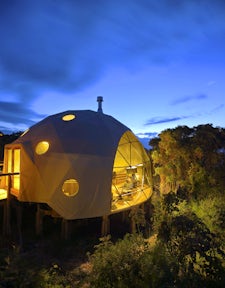
Getting to the Ngorongoro Crater
There are two options to get to the crater. The first is to drive from Arusha to the crater, which takes about 4 hours. A common setup is to get picked up from Kilimanjaro Airport.
It is often a good idea to arrive early at the crater gates to avoid waiting in a queue to buy park tickets – this can mean it is worth stopping off halfway between Arusha and the crater for the night.
Alternatively, you can fly into the national park from Arusha. This is known as ‘fly in camp’, and we'll provide a guide and vehicle for when you arrive at the park. There is one airstrip in the park, the Lake Manyara airstrip.
Note that if you have booked your safari with us, all transport will be taken care of for you.
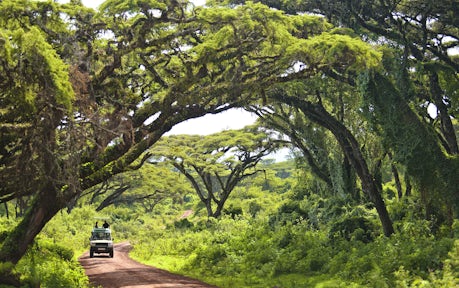
The Human History of Ngorongoro
Perhaps one of the most remarkable features of the Ngorongoro Crater is its role in our understanding of human evolutionary development.
In the Olduvai Gorge, archaeological findings revealed the remains of a Zinjanthropus, the world’s first humans. The footprints are not visible to safari-goers – they have been covered to protect them from atmospheric agents and corrosion.
Then, at Laetoli, specimens of the human genus Homohabilis and early hominids like the Paranthropus boisei have been found. At the same site, archaeologists have found evidence of the use of stone technology, and the transition to the use of iron. These incredible findings have given the crater the nickname ‘the cradle of mankind’.

The Maasai at Ngorongoro Crater
Today, around 40,000 indigenous Maasai pastoralists live in the conservation area. Only the Maasai are granted permission to live on these lands.
Archaeological sites reveal that cattle-herding people have lived in the area for thousands of years, but the Maasai only arrived in this area 200 years ago. During the rains, these semi-nomads move out onto the open plain, while in the dry season they move their cattle up into the woodlands and mountains.
In order to understand more about their history and culture, you can visit the Maasai bomas (huts). One sits on the road to the Serengeti, the other is close to Sopa Lodge. This is a chance to learn more about the culture, take photos, and buy the famous Maasai beads.
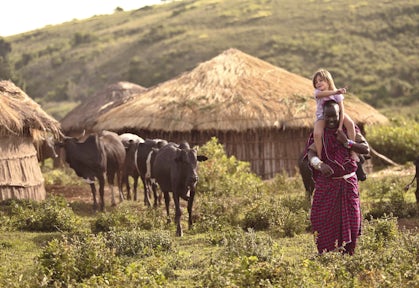
Maasai Village Visits
It's well worth including a visit to a local Maasai community whilst at Ngorongoro. Many of the guides and rangers we work with were born and raised in the surrounding communities, and they have an infectious passion for the region and its history.
A wonderful morning or afternoon activity, you'll be invited into a Maasai boma and get an insight into the traditional cattle-herding practices.
The visits can be made daily at 4pm, and involve around 30 minutes of walking (there's an option to drive if you prefer).
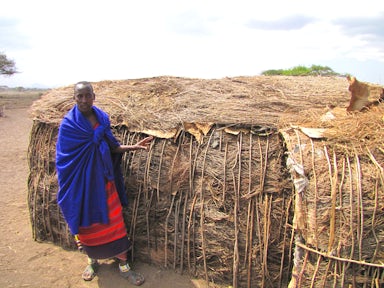
Ngorongoro National Park
3 reasons to book with Brilliant
1. Highest-rated safari company on Trustpilot
So you can book with confidence knowing you're in safe hands.
2. A fully bespoke service and expert impartial advice
Planning a trip to East Africa is complicated. Brilliant makes it easy. Our team have spent decades in the region so we can help you find the right trip - and we don't charge a fee.
3. Exclusive access at the best rates
We have exclusive access to the best value-for-money camps and lodges at rates you won't get anywhere else.

Melissa and team ready for safari
Explore the Ngorongoro Crater on these trips
The tours below showcase just some of what is possible. Use these itineraries as starting points, or to draw inspiration. Then get in touch, and let our expert team help craft the perfect itinerary for you.
Travel with Brilliant Africa
Every year, we help hundreds of travellers explore East Africa.
Our team can help you find the trip to match your dreams, budget, and appetite for adventure.
Ready to plan your African adventure?
Listen
We'll spend some time listening to your aspirations, then discuss the kind of experience that might suit you.
Match
Next we'll discuss the options, shortlist the best trips for you and present you our impartial recommendations.
Reserve
We'll place a 24 hour hold on your preferred option - without obligation - whilst we talk through the details.
Whatever your budget, group size, length of stay, preferred activity or appetite for adventure, we can help.

